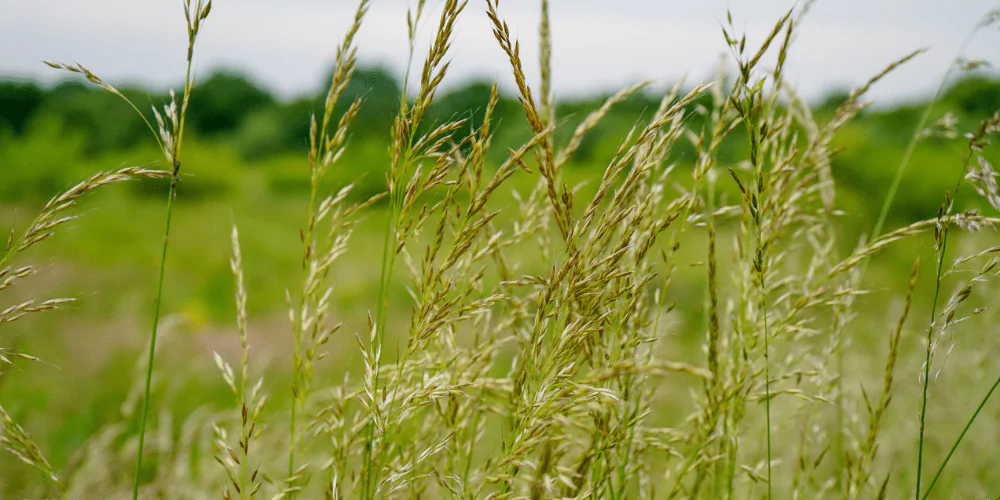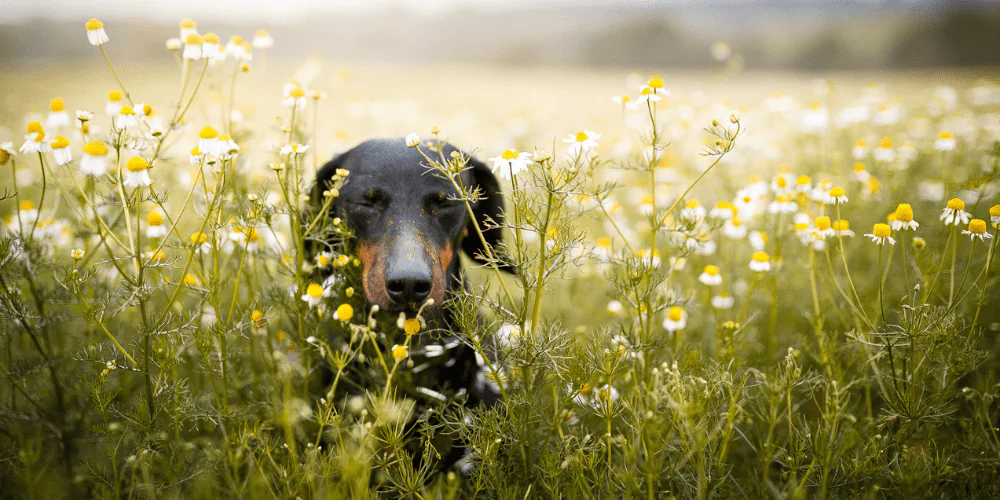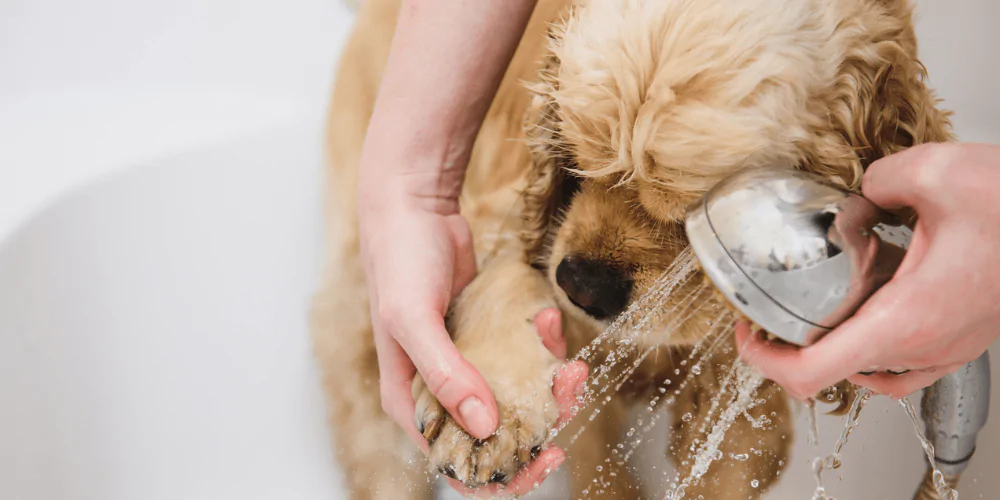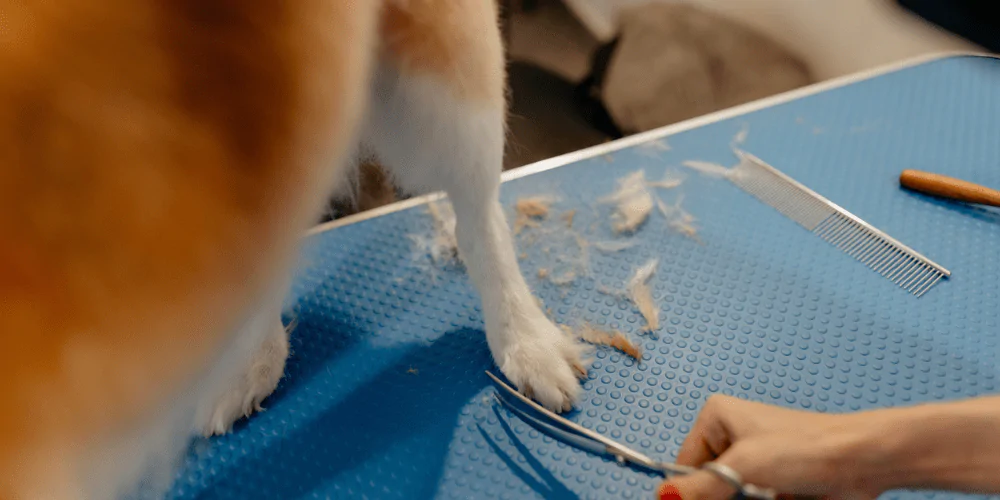
Grass seeds in dogs: Your need to know guide

Dr Lily Richards BSc (Hons) BVSc MRCVS
29 August 2023 | 5 minutes read
Whether your dog loves zooming through fields or gently rambling around the countryside, it’s important to be wary of grass seeds.
Expert vet Dr Lily Richards shares her top tips on how to spot stuck grass seeds and what treatment options are available for your canine.
- What are grass seeds and why are they a danger to dogs?
> Which dog breeds are most likely to be affected by grass seeds? - Signs and symptoms of stuck grass seeds in dogs
> Grass seeds in a dog’s paw
> Grass seeds in a dog’s eyes
> Grass seeds in a dog’s ear
> Grass seeds stuck in other areas - Treatment for stuck grass seeds
- How to prevent grass seeds in dogs

What are grass seeds and why are they a danger to dogs?
Grass seeds are small, dart-shaped, and sit on long stems. Their tiny size makes them seem harmless but they can actually cause a lot of problems for your dog, especially in summer.
Grass seeds can be very uncomfortable and painful for your pup. Their sharp tips bury themselves in your dog’s fur and pierce the skin, leading to inflammation, infection, and abscesses.
In more serious cases they can even end up travelling deeper into the body to areas like the spine and chest.
> Which dog breeds are most likely to be affected by grass seeds?
Any dog is at risk of grass seeds, especially if they are hairy and spend a lot of time in grassy areas.
Spaniels (such as Cockers and Springers) are particularly known for having problems with these seeds due to their long and floppy ears and hairy toes!

Signs and symptoms of stuck grass seeds in dogs
Grass seeds often lodge themselves in the paws, eyes, nose, and ears. Given that most dogs love being outdoors and running in the grass, it’s difficult to completely avoid the plants.
Seeds can be inhaled as well as caught in the fur. It’s important to check for them as soon as possible and contact your vet if you notice something.
Here’s some tell-tale signs that a grass seed has lodged itself in different areas of your dog’s body.
> Grass seeds in a dog’s paw
If a grass seed is stuck in between your dog’s toes, you may notice:
- Frequent paw-licking or nibbling
- Difficulty/refusing to put weight on the paw
- An inflamed, red bump
- An open wound oozing pus
A grass seed that stays stuck in your dog’s paw causes inflammation and infection. This eventually lead to lameness associated with pain.
> Grass seeds in a dog’s eyes
Get your dog to a vet immediately if you think a seed is caught in their eye.
Signs include:
- Pawing at the eye
- Keeping the eye closed
- Blinking excessively
- Soreness and redness
- A runny eye developing into thick or green discharge
Grass seeds can cause injury by scratching the surface of the eye. They can also get stuck under the eyelids which causes damage over time and lead to deeper injuries and ulcers. If not treated swiftly, this could lead to sight loss or irreparable damage to the eye in worst-case scenarios.
> Grass seeds in a dog’s ear
Should a grass seed find its way into your dog’s ear, you may not notice any immediate signs of discharge.
But after a few days you’ll see:
- Ear scratching
- Head shaking/rubbing
- Discharge/pus
- Soreness and redness
- Crustiness
Discharge in the ear is a sign that the seed has damaged the inner skin of the ear. This gives bacteria the chance to invade and create an infection. Leaving this untreated could lead to eardrum damage and progress to a deeper, middle ear infection. This is a more serious condition and makes pups feel really unwell.
> Grass seeds stuck in other areas
Your pup will seem generally unwell and lethargic with a high temperature. They could also have wounds that don’t go away.
- If a seed ends up in the nose, throat, or lungs, your dog will show symptoms such as:
- Repetitive sneezing
- Face rubbing
- Difficulty breathing
- Bloody nasal discharge

Treatment for stuck grass seeds
Removing grass seeds is usually straightforward but does need a vet’s help. Your dog may need to be sedated to allow the seed to be safely taken out.
Your vet may:
- Use tweezers to pull out the seed if it’s stuck somewhere accessible, like their paw
- Use tools to find the seed – for example, looking down your dog’s ear with an otoscope
- Send your pup away to have further tests and scans if they can’t see or feel the seed
- Recommend surgery if the seed has started to travel around the body
Your pooch may also need antibiotics to help stop or get rid of any infection.
There may be a few things you can do at home for a sore paw to help ease your dog’s discomfort. This is while you’re waiting to see a vet and shouldn’t replace professional treatment:
- Gently bathe their paw in a saltwater bath if you see pus and discharge
- Soak their paw in warm water and dry thoroughly
- Use a collar to stop your pup from licking and causing more soreness
Treatment costs for grass seeds can vary but will go up if scans and surgery are needed. To give you an idea, the average Petsure claim amount* for a grass seed foreign body is £551.

How to prevent grass seeds in dogs
Some ways you can help lower the risk of your dog getting poorly from grass seeds include:
- Clipping the fur shorter around their paws and ears to make it harder for seeds to get stuck
- Going for walks in areas with shorter grass or keeping your dog on a lead near fields with longer grass
- Checking your dog all over after a walk, focusing especially on the ears and in between the toe pads
Feel confident that your dog can be their adventurous selves with dog insurance from Petsure.
*Information taken from Petsure average claim payment data and correct as of 16 August 2023


